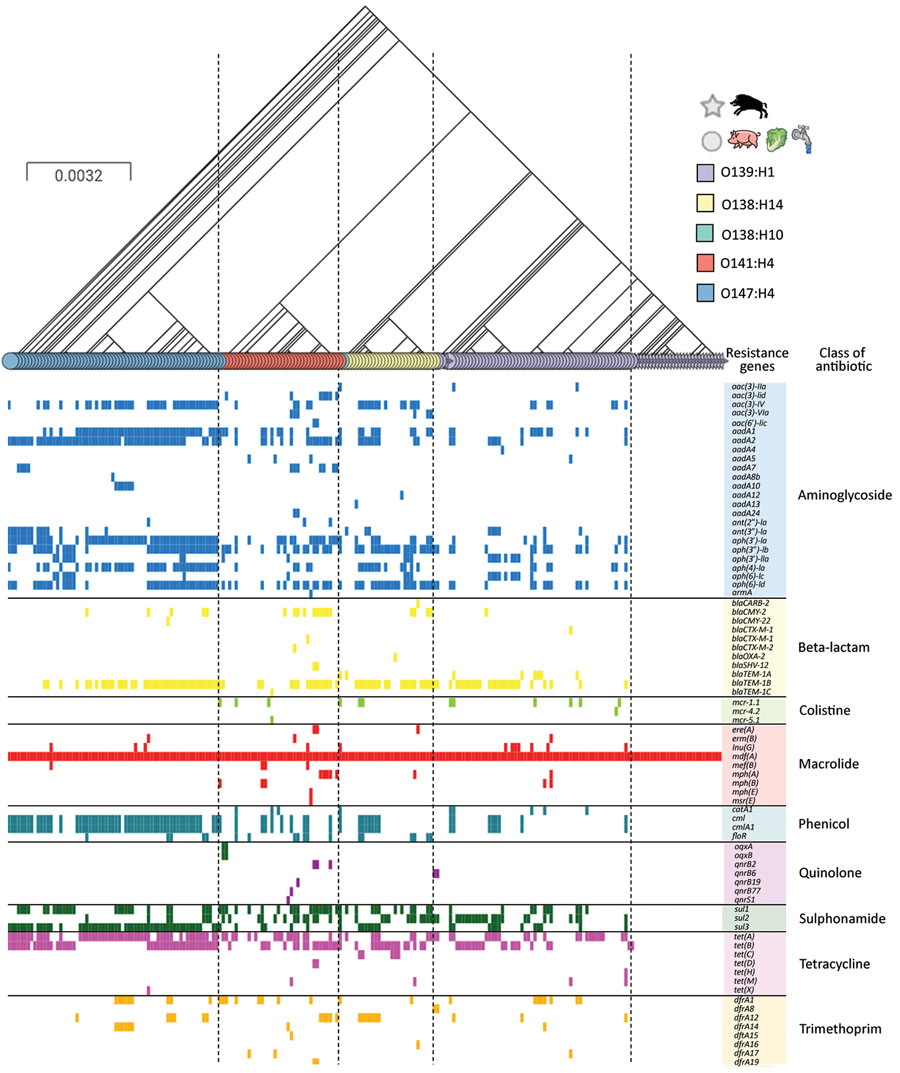Volume 28, Number 2—February 2022
Research
Wild Boars as Reservoir of Highly Virulent Clone of Hybrid Shiga Toxigenic and Enterotoxigenic Escherichia coli Responsible for Edema Disease, France
Figure 7

Figure 7. Comparison of antimicrobial-resistance genes with the phylogeny of wild boar Escherichia coli O139:H1 strains in France with those of E. coli O139:H1, O141:H4, O147:H4, and O138:H14 of worldwide origin. The tree is based on the phylogeny of the strains according to their core genome. The shapes of the leaves in the tree correspond to the origin of the strains (star, wild boars; circle, other hosts), and the colors of the leaves represent their serotype. Antimicrobial-resistance genes are grouped into different categories whose names are indicated at the top, with a color code. Scale bar indicates number of substitutions per site.
Page created: December 01, 2021
Page updated: January 27, 2022
Page reviewed: January 27, 2022
The conclusions, findings, and opinions expressed by authors contributing to this journal do not necessarily reflect the official position of the U.S. Department of Health and Human Services, the Public Health Service, the Centers for Disease Control and Prevention, or the authors' affiliated institutions. Use of trade names is for identification only and does not imply endorsement by any of the groups named above.